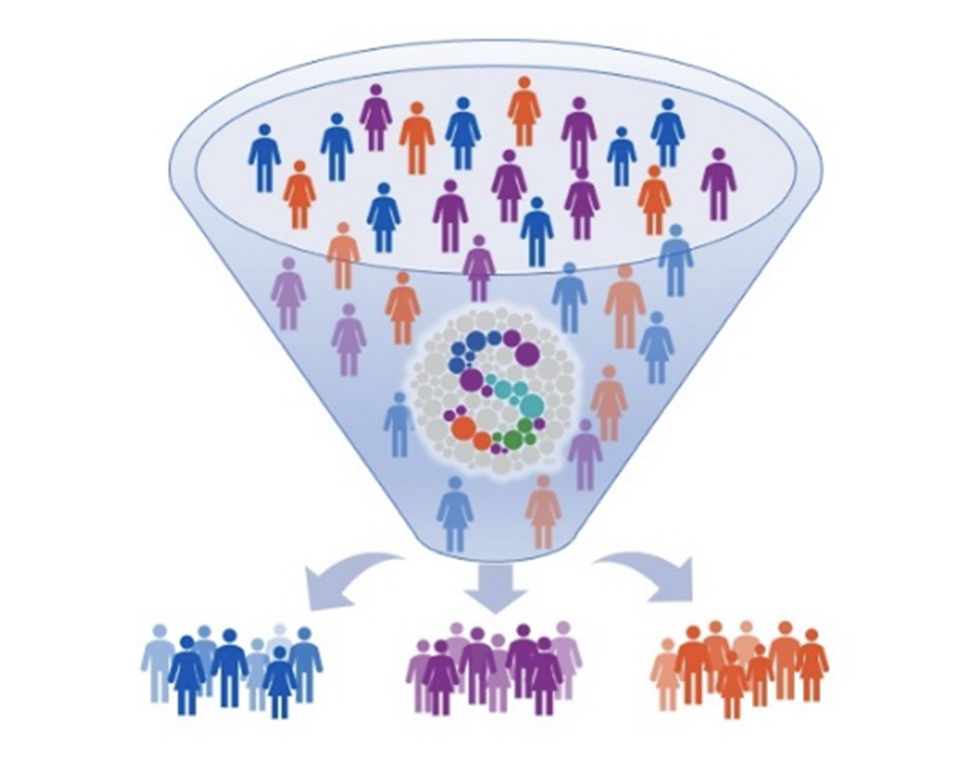By Ashton Walz
What is Consumer Segmentation
Market or consumer segmentation is a market research approach that allows you to divide a brand’s universe of potential consumers into smaller groups or segments based on their characteristics, e.g., demographics, values, attitudes, behaviors, and geography. The segments are composed of consumers who have similar characteristics within a segment and differing characteristics from all other segments.
Once the consumer population within the market has been segmented, teams can assess and compare segments to understand which segments offer the most potential for growth, i.e., which group is most likely to find value and be motivated by your products or services and respond to your marketing, promotion, and innovation initiatives.

Creating Your Segmentation
When developing your segmentation, the idea is to create segments that feature members who are as similar as possible to each other but different as possible from members in other segments. To do this, brand teams work with SIVO to define the parameters that will be used to segment the market, i.e., behaviors, attitudes, psychographics, or demographics, location, etc. For instance, if you wanted to segment the breakfast food category, you might want to include demographics (e.g., presence of kids in the household), behaviors (e.g., whether breakfast is eaten in the home or out of home) and attitudes (e.g, level of commitment to healthy eating habits) to help define your segments.
Once a plan is in place, a survey will be developed, and data will be collected from consumers in your defined market. Survey respondents will be presented with a scale to rate the importance of a series of behavioral and attitudinal statements or participate in a trade-off exercise to choose one of four statements that is most important or best describes them.
With the data collected, segments are created using clustering analysis. The ideal number of segments for a typical market is 5 to 8. More than 8 segments can be overwhelming to manage and fewer than 5 may lump too many consumers together.
Once the segments are developed, SIVO Consumer Insights experts will develop detailed profiles or personas, using all the survey data to describe or tell a story about each segment. The profiles/personas highlight the unique attributes and behaviors of the segments for easy comparisons.
Applications for Consumer Segmentation
When analyzing the consumer segmentation, it is important to understand the best ways to use this valuable marketing research tool.
Targeted Marketing Campaigns
The first primary use is to develop targeted marketing campaigns. By understanding the unique needs, interests, and demographics of each segment, business teams can alter their marketing messages and promotional activities to resonate with specific segments to increase consumer engagement. When marketing communications have been written with a specific consumer segment in mind, consumers feel understood and are more motivated to make a purchase.
Optimized Distribution in Stores and Channels
Understanding the consumer segmentation within a market also helps businesses optimize their distribution and sales channels. Different consumer segments may have varying preferences for different store banners or channels. They might also have different preferences for online shopping, physical stores, or a combination of both. By identifying these preferences and behaviors, companies can allocate resources strategically, focus on the most effective stores and channels, and provide a seamless shopping experience for each segment.
Identify Market Gaps
Another significant use of consumer segmentation is to help identify market gaps where there are a lack of products or services that are currently meeting the needs of specific segments. Gaps in the market can then be translated into opportunities to develop new products or modify existing ones to cater to the needs of specific segments. This strategy enables companies to stay ahead of competitors, enhance consumer satisfaction, and build stronger brand loyalty.
Identify Additional/Secondary Markets
Consumer segmentation allows businesses to identify untapped market opportunities and potential areas for expansion. By analyzing the demographics, behaviors, and preferences of different segments, companies can uncover secondary or adjacent target segments that also align with their products or services. This knowledge enables strategic decision-making and facilitates successful market penetration.
Your Source for Expert Consumer Insights
At SIVO, Inc., we are dedicated to helping our clients develop and utilize consumer segmentation that reveals their consumer target. We design custom learning plans that will help you understand which segment of consumers hold the most potential for growth and then facilitate the development of action plans so you can connect with and serve your consumer target.
Contact us via our website form or email us at Contact@SIVOInsights.com today to schedule a discovery call!


